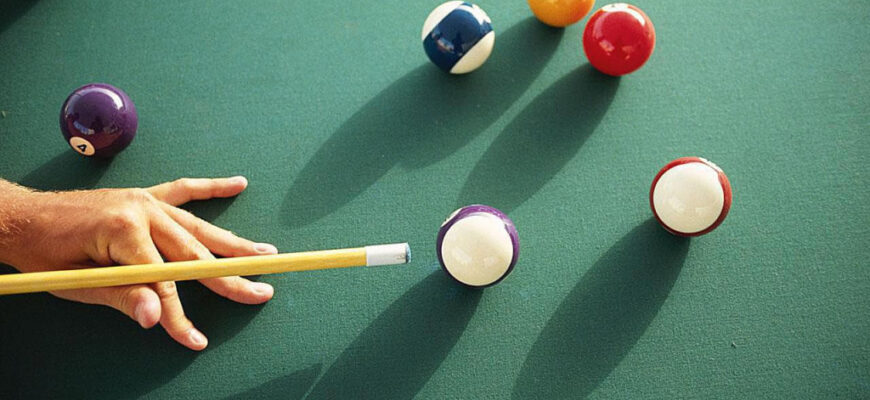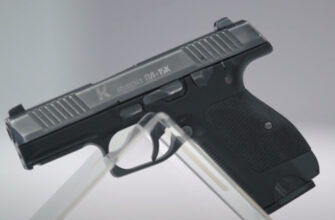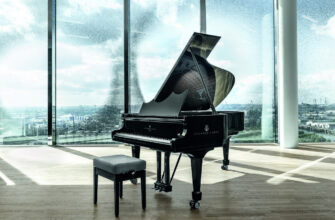As the skills of the billiards player grows, the need to use a quality cue increases significantly. The outcome of a particular game in billiards depends on how correctly the cue is selected and how its characteristics correspond to the conditions. It is for this reason that experienced billiards players are advised to pay close attention to buying a cue.

- The best manufacturers of billiard cues
- Types of billiard cues
- Cues designed for the Russian pyramid
- Snooker cues
- Pool cue
- The main criteria for choosing a cue
- Cue design
- Balancing the cue
- Straightness and degree of bend
- Cue diameter
- The material from which the cue is made
- Construction and material of stranding
- Storage case
- Choosing a cue for Russian billiards
The best manufacturers of billiard cues
The most popular among experienced billiard players are products manufactured under the following brands:
-
Longoni;
-
Cuetec;
-
Norditalia;
-
Weekend;
It is necessary to take into account not only the technical characteristics of specific models, but also the feedback from experienced players who have identified both their strengths and weaknesses. The easiest way to get acquainted with them is on specialized forums on the Internet.
Types of billiard cues
It is necessary to choose a specific cue based on the type of a specific billiards game.
Cues designed for the Russian pyramid
Long models available in one piece or two piece design. The latter are made of various types of wood: a turnaround, as a rule, of rosewood or ebony, while beech or hornbeam is used to make the shaft. The length of such models is almost always limited to 160 centimeters, and the weight, compared with the mass of the ball, should exceed it by 1.5-2 times. Such cues are balanced at around 43-45 centimeters.
Snooker cues
Compact models with both one-piece and two-piece designs. As a rule, they are made of ash. The length of such models can range from 90 to 150 centimeters, the balancing point is located between 40 and 50 centimeters from the bumper, and the average weight is at the level of half a kilogram mark. Another notable feature of snooker cues is the minimum sticker size, ranging from 7 to 12 millimeters.
Pool cue
Robust and rigid models with a fixed length of 150 centimeters. A wide variety of materials can be used for their manufacture, from natural wood to fiberglass and even natural carbon. Most models weigh from 500-510 to 640-650 grams. There are both solid and collapsible models.
The main criteria for choosing a cue

Cue design
-
Solid models. They are made from a single piece of wood and are distinguished by verified balancing and well-defined characteristics. The disadvantages include transport length and whimsical storage and transportation;
-
Composite models consist of three main elements – a turn bar (lower section), a shaft (upper part), and twists (a threaded connection that fixes both parts together). Can be made from a wide variety of woods to achieve specific properties. The disadvantages include the need for precise balancing and centering.
Balancing the cue
A parameter directly responsible for the convenience of its operation and the ability to perform an accurate strike. Experienced players are advised to pay attention to those models whose balancing is performed at a distance of 40 to 55 centimeters from the bumper, depending on the type of a particular cue.
Straightness and degree of bend
The more direct a particular cue is, the better its balancing, the more accurate the impact and the less parasitic vibrations. Directness is determined quite simply: all that is required is to roll the cue on the flat surface of the billiard table. If we are talking about composite models, first you need to roll the shaft and the turnbuckle separately and only then put the cue together and roll it on the table.
Cue diameter
Should have a uniform reduction from the bumper to the edge of the shaft, without pronounced drops and irregularities. Traditionally, it is believed that the diameter of the shuttle should be at around 25-30 millimeters, in the twisting area it should decrease to 17-21 millimeters and smoothly flow to 12-13 millimeters to the edge of the shaft. The more the taper of the cue from the edge of the turnstile to the shaft, the more the cue bends during hard screw blows. Conversely, the smaller the taper, the higher the rigidity of the cue.
The material from which the cue is made
The best models are traditionally made from natural wood – both in functional and aesthetic terms. The most popular are the following types of wood:
-
Hard varieties – rosewood, wenge, macassar;
-
Soft varieties – paduka, amaranth, mahogany;
In a number of individual cases, cues are also used made of all kinds of synthetic materials – plastic, fiberglass, carbon fiber. These cues are very niche devices that can hardly be recommended for a newbie purchase.
Construction and material of stranding
A twist is a connecting knot present in two-piece cues. It is made of metal and provides not only a reliable connection of the device, but also its correct centering, thus eliminating the curvature of the device. You should also pay attention to the gash – the form factor of cutting the twist thread. Currently, a wide variety of types have become widespread – tulip, wave, cobweb, but the largest number of professional players prefer the classic form factor.
Storage case
The case is necessary to provide protection against moisture, sunlight, mechanical stress and dust. It is made from polymeric materials or natural leather. In addition to protective functions, a high-quality case plays a very important aesthetic function, and therefore experienced players prefer to use custom cases, handcrafted to the individual order from genuine leather.
Choosing a cue for Russian billiards

A good cue for playing Russian billiards should have the following distinctive features:
-
Two-part construction, the turnaround is made of rosewood or ebony, the shaft is made of hornbeam;
-
Twisting – metal, connection form factor – classic;
-
The cue diameter varies from 145 to 165 centimeters depending on the player's preferences;
-
The model is balanced at a distance of 40-46 centimeters from the edge of the turnstile;
-
The weight of a particular model is selected based on the weight of the ball for the game and exceeds it by 2-2.5 times;
-
The case should be made of genuine leather and reliably protect the cue from mechanical stress, dust, moisture and direct sunlight.
Attention! This material is the subjective opinion of the authors of the project and is not a purchase guide.









